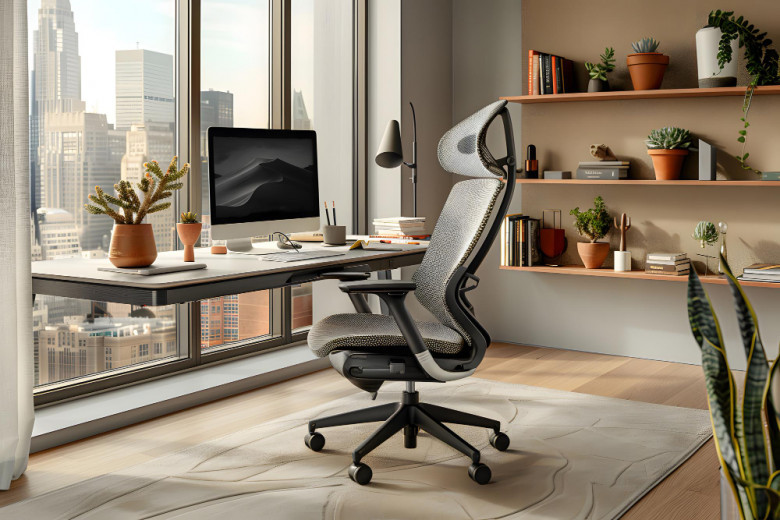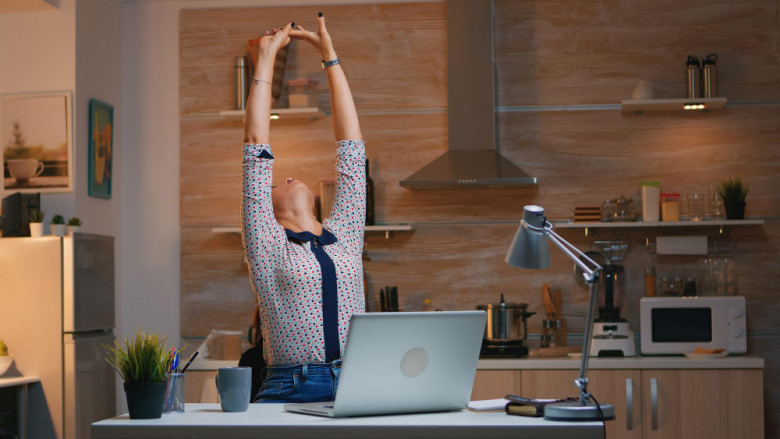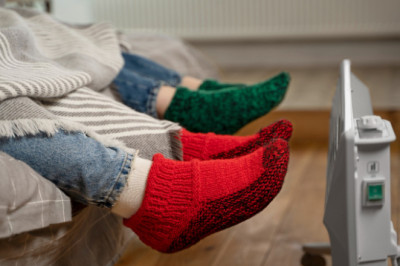Disclosure: This page contains affiliate links, meaning, at no additional cost to you, we may earn a commission if you click through and make a purchase.
In recent years, working from home has become increasingly common, prompting many people to rethink how they set up their home offices. A well-designed workspace can significantly impact your productivity, creativity, and overall well-being. Whether you have a dedicated room or a small corner in your living space, creating a home office that fosters productivity is crucial. Here's a guide to help you design a workspace that meets your needs and enhances your work-from-home experience.

Choosing the Right Ergonomic Furniture
Investing in ergonomic furniture is the foundation of a productive home office. Ergonomic design focuses on creating a comfortable working environment that reduces strain on your body, allowing you to work efficiently for extended periods. Here are some key furniture pieces to consider:
1. Ergonomic Chair
- Adjustability: Look for a chair with adjustable height, lumbar support, and armrests to ensure proper posture.
- Material: Choose breathable materials like mesh or fabric to keep you comfortable throughout the day.
- Cushioning: Opt for a chair with ample cushioning to provide support and reduce fatigue.
2. Adjustable Desk
- Height Adjustability: Consider a sit-stand desk that allows you to alternate between sitting and standing positions, promoting better circulation and reducing the risk of health issues associated with prolonged sitting.
- Surface Area: Ensure the desk has enough space to accommodate your computer, documents, and other essential items.
3. Monitor Stand
- Positioning: Use a monitor stand to elevate your screen to eye level, reducing neck and eye strain.
- Multiple Monitors: If you work with multiple monitors, ensure they are at the same height and angle for seamless transitions between screens.
Designing for Optimal Lighting
Proper lighting is essential for a productive workspace. It reduces eye strain and creates a pleasant atmosphere that keeps you energized and focused. Here are some lighting tips to enhance your home office:

1. Natural Light
- Positioning: If possible, place your desk near a window to take advantage of natural light, which boosts mood and productivity.
- Blinds or Curtains: Use adjustable blinds or curtains to control glare and create a comfortable working environment.
2. Task Lighting
- Desk Lamp: Invest in a high-quality desk lamp with adjustable brightness to provide focused lighting for reading, writing, and computer work.
- LED Bulbs: Choose LED bulbs that mimic natural daylight to reduce eye strain and create a bright, inviting workspace.
3. Ambient Lighting
Decorating Your Office for Inspiration
Decor plays a vital role in creating a workspace that inspires creativity and productivity. Personalize your home office with decor that reflects your personality and motivates you to do your best work:
1. Color Scheme
- Calming Colors: Choose a color palette that promotes focus and calmness, such as soft blues, greens, or neutrals.
- Accent Colors: Add pops of color with accessories like cushions, artwork, or a rug to keep the space visually stimulating.
2. Artwork and Decor
- Inspirational Art: Hang artwork or quotes that inspire and motivate you to achieve your goals.
- Greenery: Incorporate plants into your office decor to improve air quality and add a touch of nature.
3. Personalized Items
- Family Photos: Display photos of loved ones or memorable moments to create a positive and comforting atmosphere.
- Unique Decor: Add unique decorative items that reflect your interests and personality, making your office feel like a personalized haven.
Organizing Your Workspace for Efficiency
An organized workspace is key to maintaining productivity and focus. Implement organizational strategies to keep your home office clutter-free and efficient:
1. Storage Solutions
- Shelving: Install shelves to store books, documents, and decorative items, keeping your desk clear and organized.
- Cabinets: Use cabinets or filing cabinets to organize important paperwork and office supplies.
2. Desk Organization
- Cable Management: Use cable organizers to keep cords and cables tidy and prevent them from tangling.
- Desk Accessories: Invest in desk organizers, such as trays, pen holders, and file organizers, to keep essential items within reach.
3. Digital Organization
- Digital Files: Regularly organize and back up digital files to ensure easy access and prevent data loss.
- Cloud Storage: Utilize cloud storage solutions to store important documents and collaborate with team members seamlessly.

Tech Gadgets to Improve Work Efficiency
Integrating technology into your home office can streamline your workflow and boost productivity. Here are some tech gadgets to consider:
1. Noise-Canceling Headphones
- Focus: Use noise-canceling headphones to block distractions and create a focused work environment, especially in busy households.
- Calls: Choose headphones with a built-in microphone for clear communication during virtual meetings.
2. Smart Speaker
- Voice Commands: Use a smart speaker to set reminders, manage your schedule, and control smart home devices with voice commands.
- Music: Listen to music or ambient sounds to enhance concentration and productivity.
3. Webcam and Microphone
- Video Quality: Invest in a high-quality webcam and microphone for virtual meetings and presentations, ensuring clear audio and video.
Tips for Keeping a Clutter-Free Workspace
A clutter-free workspace promotes mental clarity and efficiency. Implement these tips to maintain a tidy home office:
- Daily Cleaning: Spend a few minutes each day tidying up your desk and organizing paperwork.
- Weekly Decluttering: Set aside time each week to declutter and remove unnecessary items from your office.
- Minimalist Approach: Adopt a minimalist mindset, keeping only essential items and decor in your workspace.
Conclusion
Designing a productive home office involves more than just arranging furniture and decor; it's about creating an environment that supports your work habits and personal style. By investing in ergonomic furniture, optimizing lighting, personalizing decor, and incorporating technology, you can create a workspace that enhances your productivity and well-being. Embrace the opportunity to design a home office that inspires you to excel in your professional endeavors and makes working from home a more enjoyable experience.












